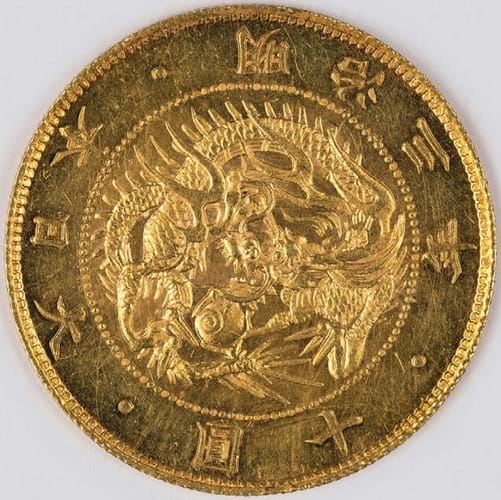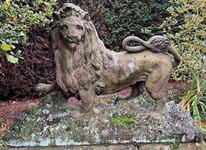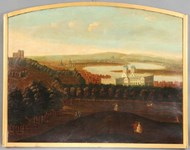Toovey's Coins, Medals & Banknotes auction on January 19 got off to a storming start as the very first lot – a Japanese Meiji 10 yen Year 3 pattern gold coin from 1870 – demolished an estimate of £50,000- 80,000 to sell for £260,000 (plus 24.5% buyer’s premium).
It is currently one of only five known examples. Of the four others, one is in the Bank of Japan collection, another is in the British Museum and two were sold by Heritage Auctions in Dallas in 2011 and 2014.
The first, for a hammer price of $240,000, had a provenance to the 1954 Farouk Palace collection sale and later to the Meiji coin collector Norman Jacobs. The second sold at $120,000 had been “hiding in a European family for many years”.
This large flan coin pattern, with a diameter of 32mm and a weight of 15.6g, dates from just two years after the Meiji Restoration brought Japan nominally back to imperial control.
Under the New Currency Act of 1871, Meiji coins became standardised, smaller, round and identical (manufactured by Western machinery). They were known as yen – ‘small round object’. The 10 yen Year 3 pattern type was originally intended for general issue and was included in the new act. However, it was decided the relatively thin gauge would cause problems and a smaller diameter coin of the same weight was produced dated Meiji 4.
Discovered on a routine house clearance valuation appointment with a group of other gold coins at a local property, Toovey’s example was described as “extremely fine overall, dull mirror-like fields, sharp detailing with overall hairlining”. It came by descent from George Henry Williamson (1845-1918), a former mayor of Worcester, a manufacturer and a Conservative politician. It is thought likely by the vendor, however, that this coin was originally acquired by his father, William Blizard Williamson (1811-78), a tinsmith from Cork who founded the Providence Tinplate Works in Worcester in 1858.
George and his brother William Blizard the younger took over the company after their father’s death. George deposited this coin with several others for some time at Lloyds bank in Worcester, incorrectly labelling it Chinese gold piece, suggesting that he was unaware of its full significance.
The lot was contested by three phones and two room bidders in Washington, West Sussex. The majority of the bidding, however, was left to a room bidder acting for a client in China and a phone acting for a client in the US. It was the latter that won.
















